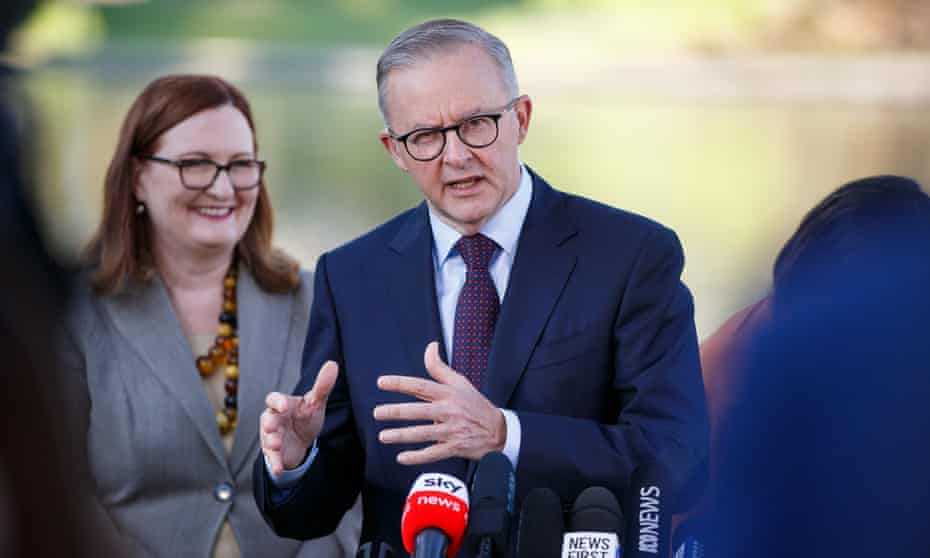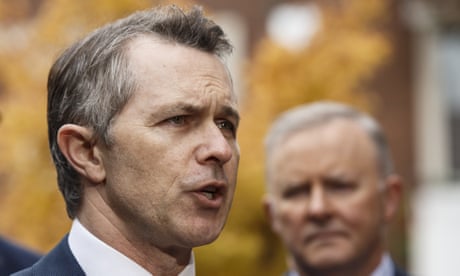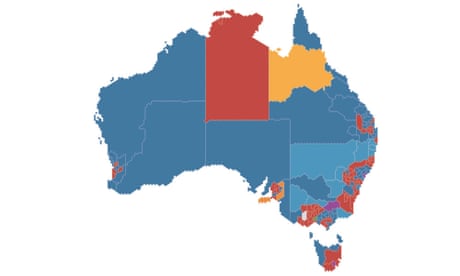Extract from The Guardian
We examine Anthony Albanese’s deliberately pared-back, small-target policies for 2022 federal election campaign.

Mon 11 Apr 2022 15.25 AEST
Last modified on Mon 11 Apr 2022 16.07 AESTLabor, which ran an ambitious policy agenda at the 2019 election, has deliberately pared back its policy offering as part of a small-target strategy, but has announced several key policies that form the basis of its campaign.
While Labor’s official website boasts 24 different policies, the party’s leader, Anthony Albanese’s main focus has been on the care sector, including childcare, aged care, and Medicare. He has also been talking up policies to promote manufacturing in Australia, Labor’s energy policy that will “end the climate wars” and more secure work as priorities.
So what are Labor’s key policies?

Aged care
The centrepiece of Albanese’s budget in reply speech was a pledge to fix the crisis in the aged care sector, with a promise to spend an extra $2.5bn in the sector if elected.
He said Labor would also fund a wage increase for aged care workers and require residential aged care facilities to have a registered nurse on site 24 hours a day, seven days a week. The final price tag for the wage claim is not yet known given it is still to be determined by the Fair Work Commission, however, the Health Services Union estimates the cost of the full 25% wage increase, along with a staff increase of about 60,000 people, would cost $4bn a year.
The aged care sector has welcomed the commitments, which fulfil recommendations made by the Royal Commission into aged care, but some groups have asked for more detail.
Childcare
Cheaper childcare is another of Labor’s key campaign messages, with Albanese pledging to lift the maximum childcare subsidy rate to 90% for families for the first child in care, increase subsidies for single-child families earning less than $530,000, and extend the subsidy to outside school hours care.
Labor says that most families will be better off under its reforms, which will cost $5.4bn starting from July 2023.
According to the Grattan Institute, Labor’s policy costs twice as much as the Coalition’s recent childcare reforms, but will help more families and improve workforce participation.

“It supports more families and would have much larger and more widespread economic benefits. It would bring down out-of-pocket costs and sharpen workforce incentives for a much wider group of families,” Owain Emslie from the Grattan Institute says.
Medicare
While “making it easier to see a doctor” has been a key message from Albanese in recent months, the policy detail is yet to be announced, with this still expected during the election campaign.
Climate and energy policy
Promising to “end the climate wars” is another of Albanese’s election pledges, with the policy previously proving to be a vexed one for Labor, particularly in coal seats in New South Wales and Queensland.
Labor has set an emissions reduction target of 43% by 2030, compared to the 26 to 28% promised by the Coalition, and will boost the share of renewables in the national electricity market to 82% if it forms government.
Under its “powering Australia” plan, Labor will also upgrade the electricity grid to improve energy transmission, invest $3bn in green metal production and other carbon reducing measures and roll out solar banks and community batteries.
Secure jobs and skills
Labor says it will fund up to 20,000 extra university places over 2022 and 2023, and provide access to 465,000 free Tafe places in nominated areas of skills shortages under a $1.2bn policy aimed at securing jobs.
It says fee-free Tafe places in targeted areas will help rebuild the industries hit hardest by the pandemic, like hospitality and tourism, as well as meeting current and future needs in the care economy, including jobs in childcare, aged care, disability care, nursing and community services.
The funding will include 45,000 new Tafe places.
As part of its pledge for more secure jobs, Labor is also promising “same job, same pay” legal protection for contractors, more security for gig economy workers and to make wage theft illegal.
Industry and employer groups have rejected much of what Labor is proposing, saying it will remove flexibility from the workforce and impose large costs.
Manufacturing
The fund would be modelled on the Clean Energy Finance Corporation, meaning the initial $15bn capital injection would stay off the government balance sheet to be provided through a combination of loans, equity, co-investment and guarantees.
Recipients of the funding would need to return rates above the government borrowing rate, with the intention of funding projects in partnership with the private sector, including superannuation funds.
Albanese says the fund would put Australia back on a path to “make cars, trains and ships” as part of a manufacturing revival.
It has also pledged to establish a Future Made in Australia Office, backed up by laws, that would leverage the commonwealth’s multi-billion procurement budget to actively support local industry.
No comments:
Post a Comment